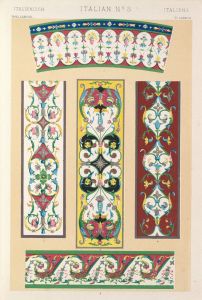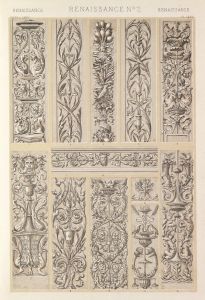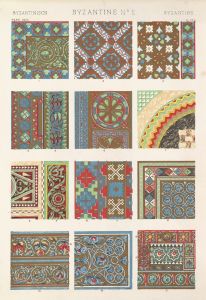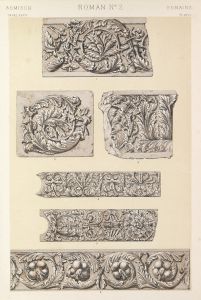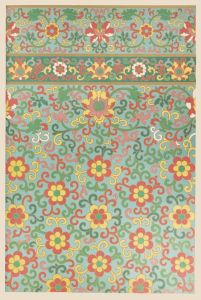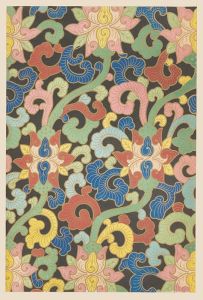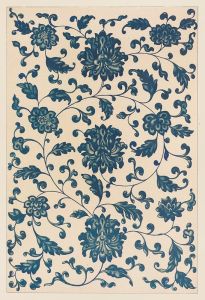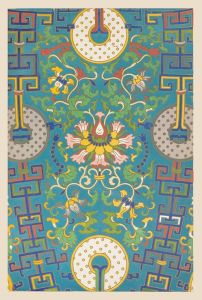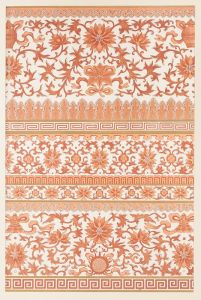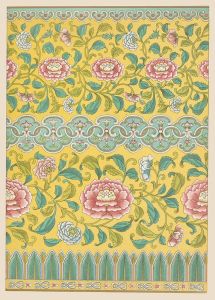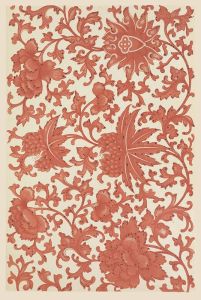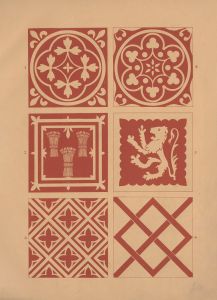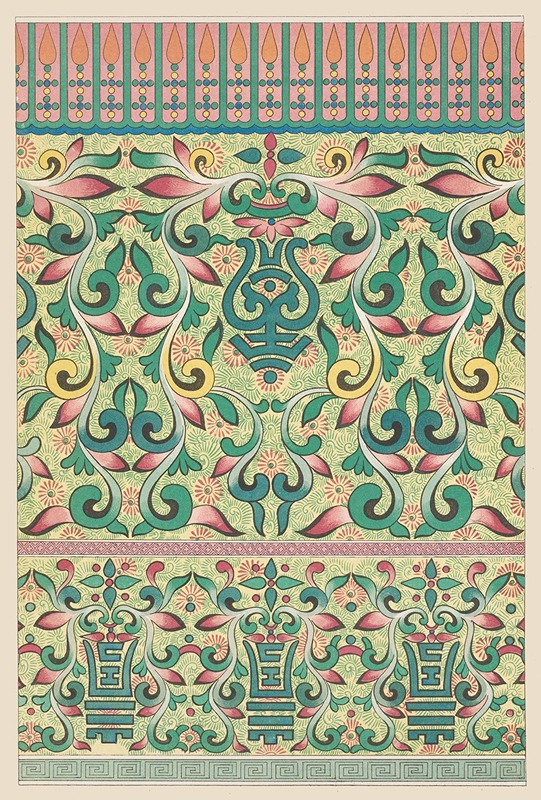
Examples of Chinese ornament, Pl.86
A hand-painted replica of Owen Jones’s masterpiece Examples of Chinese ornament, Pl.86, meticulously crafted by professional artists to capture the true essence of the original. Each piece is created with museum-quality canvas and rare mineral pigments, carefully painted by experienced artists with delicate brushstrokes and rich, layered colors to perfectly recreate the texture of the original artwork. Unlike machine-printed reproductions, this hand-painted version brings the painting to life, infused with the artist’s emotions and skill in every stroke. Whether for personal collection or home decoration, it instantly elevates the artistic atmosphere of any space.
"Examples of Chinese Ornament, Pl.86" is a plate from the influential design book "The Grammar of Ornament" by Owen Jones, first published in 1856. Owen Jones was a British architect and designer, renowned for his theories on color and ornamentation, which significantly influenced the decorative arts in the 19th century. His work aimed to systematize the principles of design and to provide a comprehensive source of inspiration for designers and architects.
"The Grammar of Ornament" is a seminal work that compiles a wide array of decorative styles from various cultures and historical periods. It includes examples from ancient Egypt, Greece, Rome, the Islamic world, and many others, highlighting the diversity and richness of global decorative arts. The book is particularly noted for its vivid chromolithographic plates, which were groundbreaking at the time for their use of color and detail.
Plate 86, "Examples of Chinese Ornament," specifically focuses on the decorative arts of China. During the 19th century, there was a growing fascination with Asian art and design in Europe, often referred to as "Chinoiserie." This interest was part of a broader trend of Orientalism, where Western artists and designers drew inspiration from the aesthetics of the East. Jones's inclusion of Chinese ornament in his book reflects this fascination and acknowledges the sophistication and complexity of Chinese design.
Chinese ornamentation is characterized by its intricate patterns, symbolic motifs, and harmonious use of color. Common elements include floral designs, geometric patterns, and depictions of mythical creatures such as dragons and phoenixes. These motifs often carry significant cultural and symbolic meanings, rooted in Chinese philosophy, mythology, and tradition.
Jones's depiction of Chinese ornament in Plate 86 showcases these elements, providing a visual representation that captures the essence of Chinese decorative art. The plate likely includes examples of traditional motifs and patterns, rendered with the precision and vibrant color that Jones's chromolithographic process allowed. This would have served as both an educational resource and a source of inspiration for Western designers seeking to incorporate Chinese elements into their work.
The impact of "The Grammar of Ornament" and its plates, including those depicting Chinese ornament, was substantial. It not only provided a reference for designers but also contributed to a greater appreciation and understanding of non-Western art forms. Jones's work encouraged a more global perspective on design, emphasizing the value of learning from diverse cultural traditions.
In summary, "Examples of Chinese Ornament, Pl.86" by Owen Jones is a representation of Chinese decorative art as part of his broader effort to document and celebrate the world's ornamental traditions. Through this work, Jones played a crucial role in shaping 19th-century design and fostering cross-cultural appreciation in the arts.





